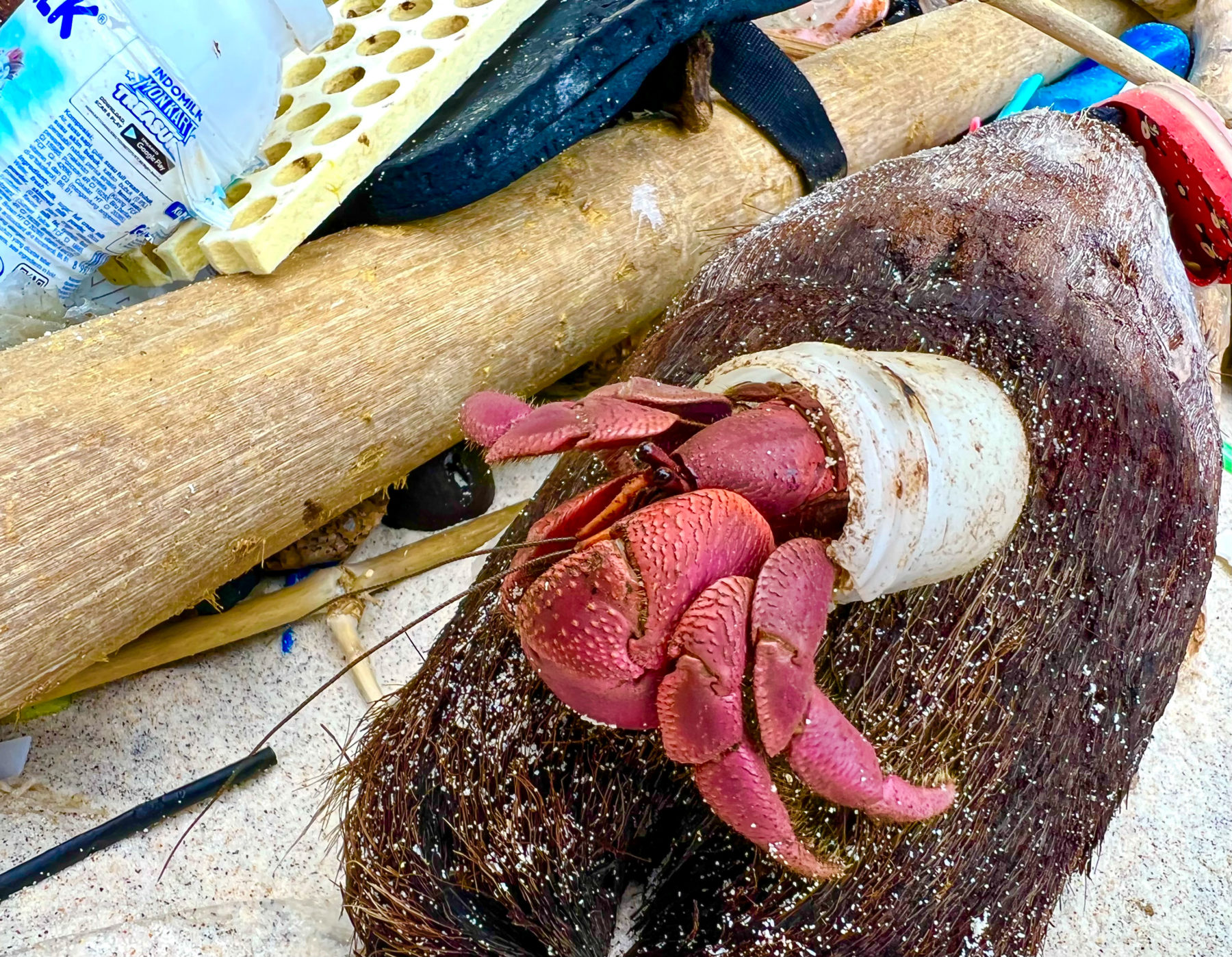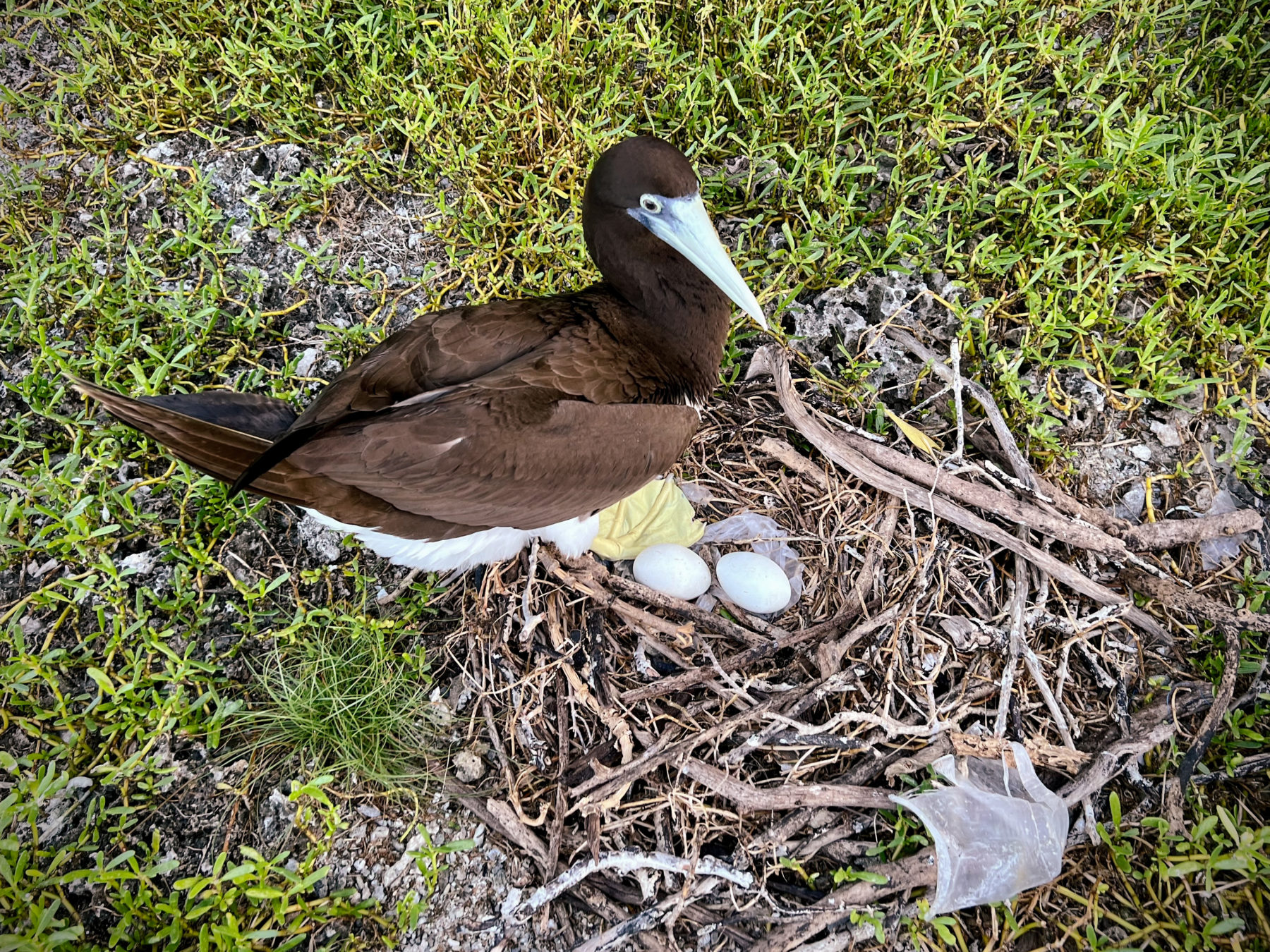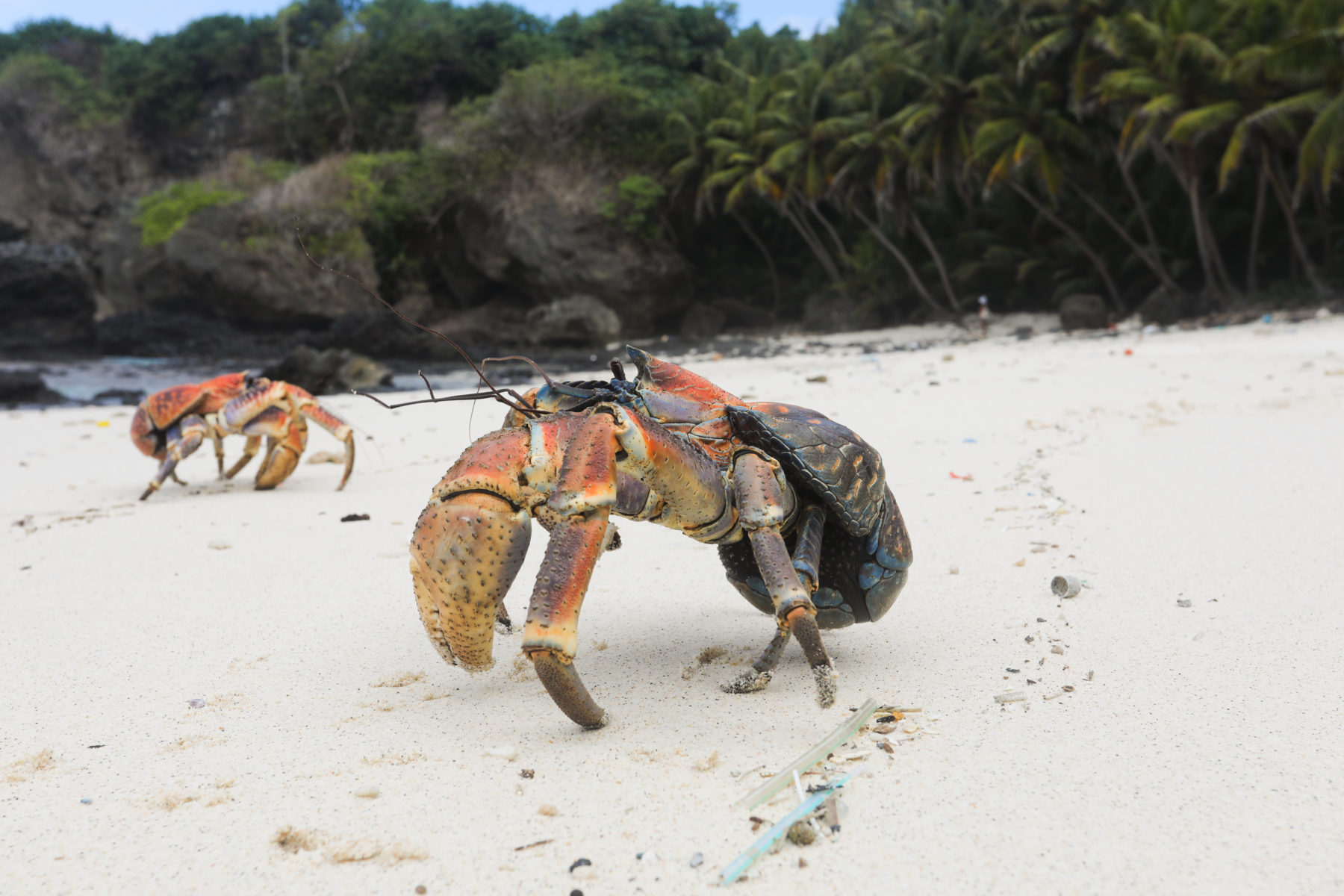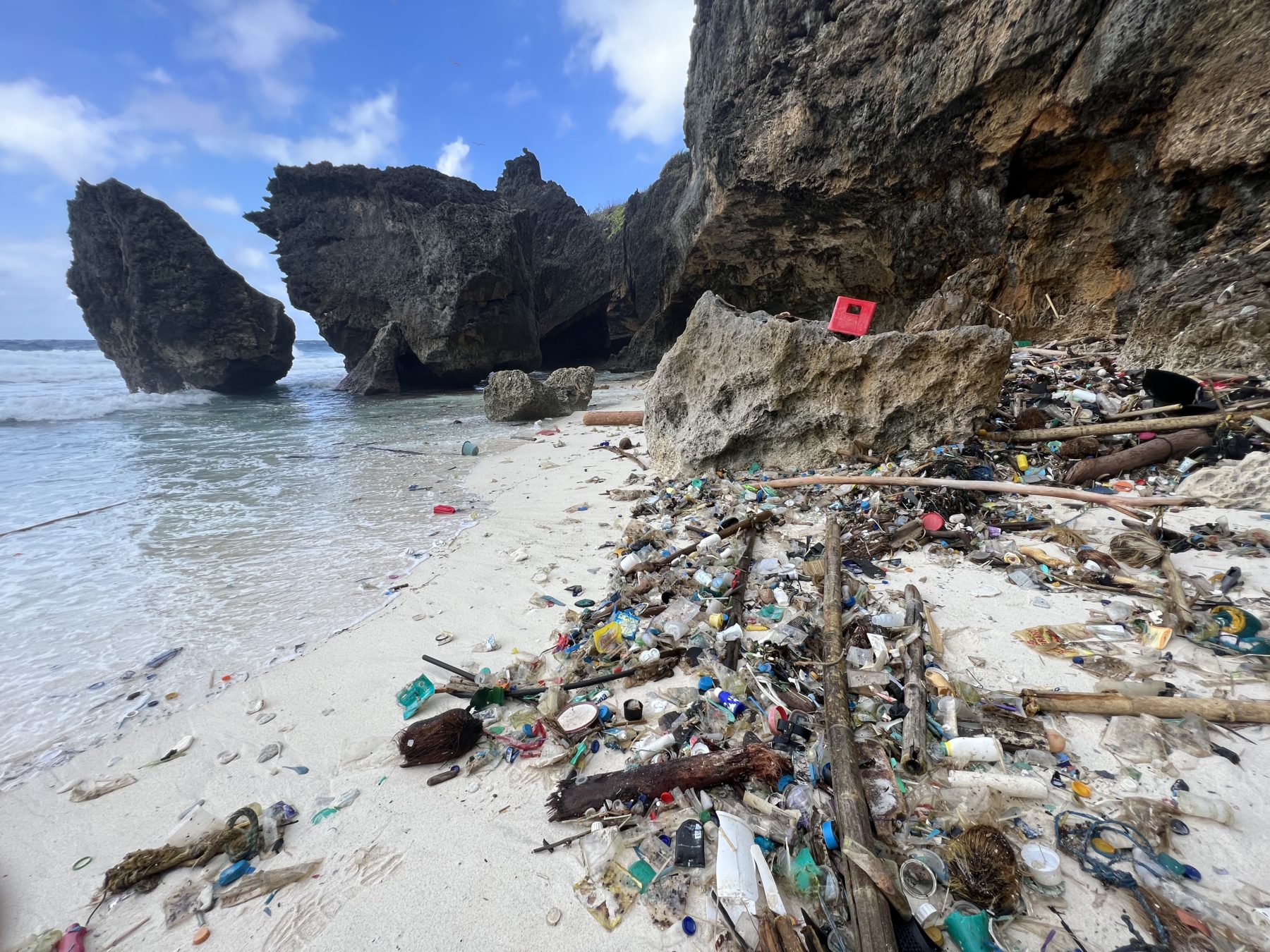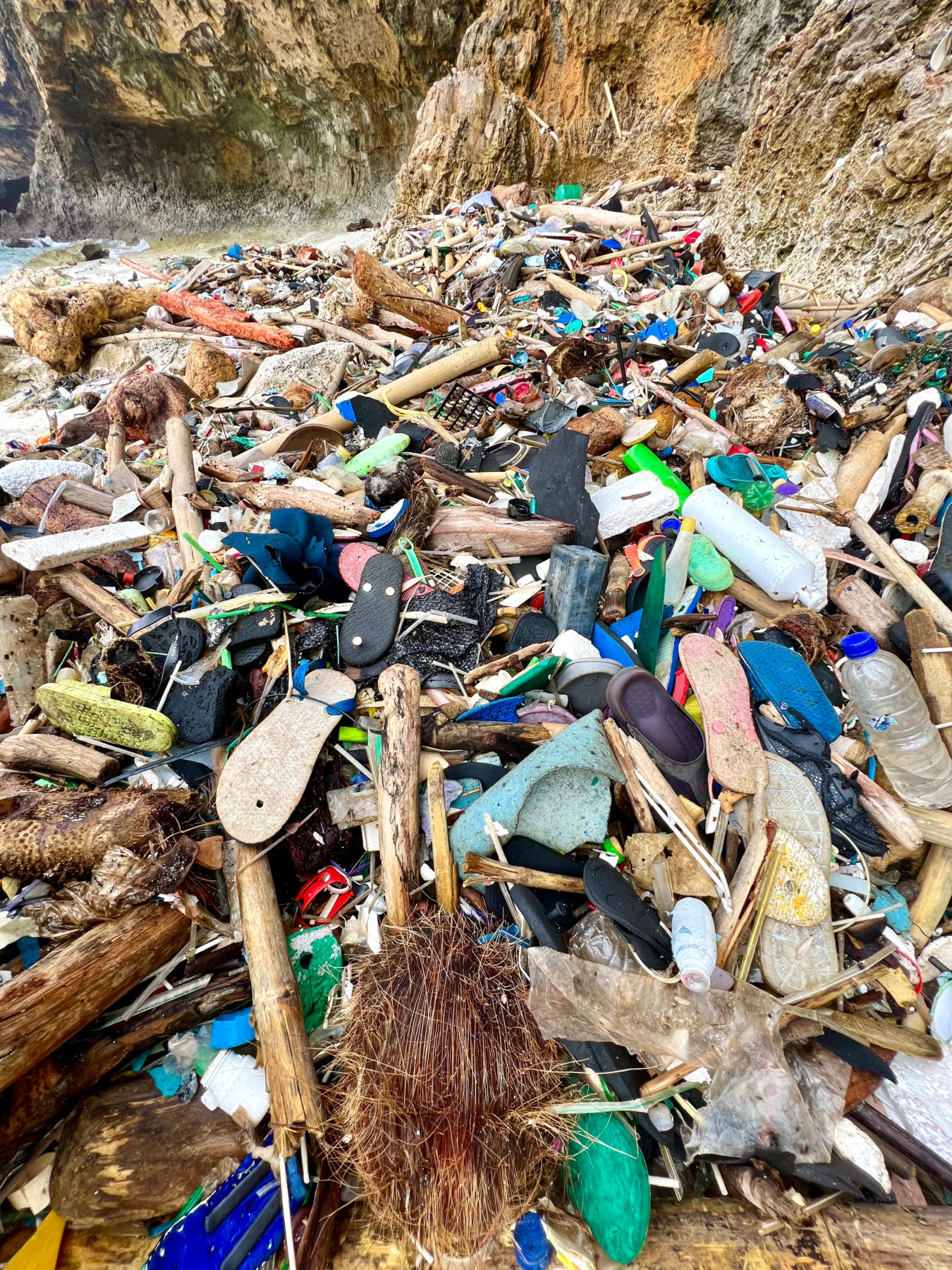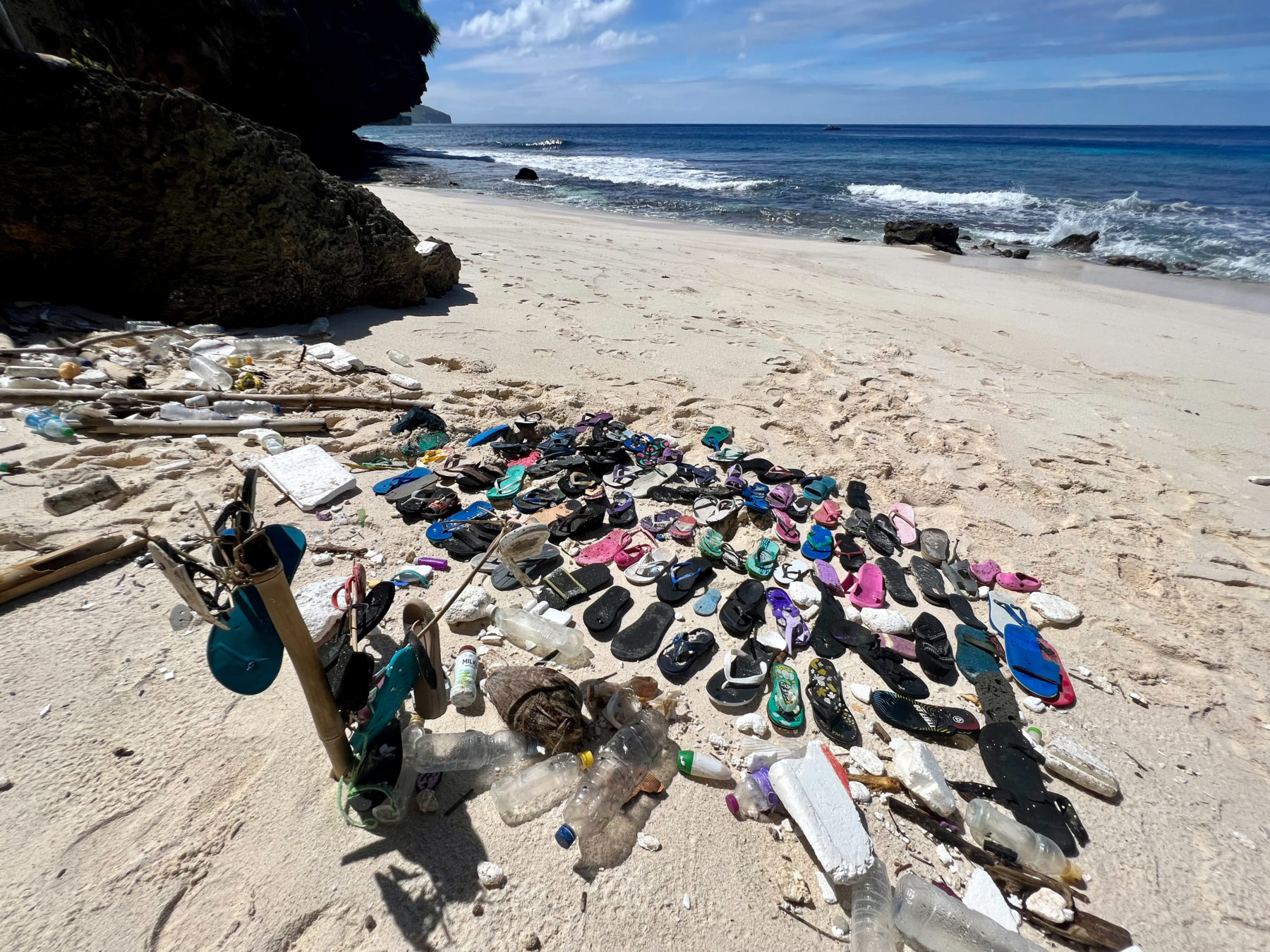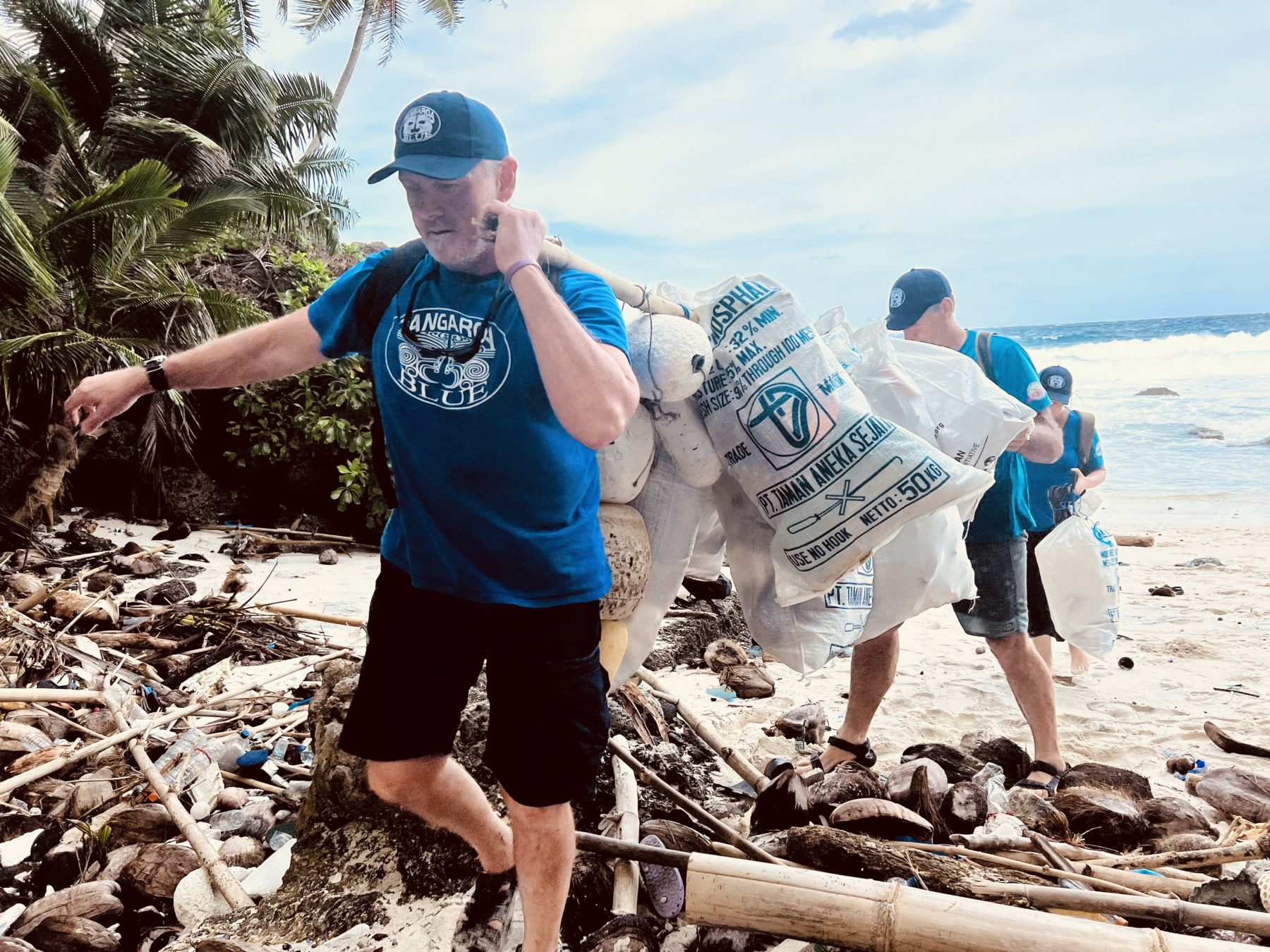Drowning in plastic on Christmas Island

Located in the Indian Ocean, 2600km north-west of Perth and 350km from Indonesia, the remote Australian Territory of Christmas Island is home to an extraordinary range of flora, fauna, rare birds and land crabs.
The extinct volcano, rimmed by a narrow tropical reef, rises dramatically out of the sea to a height of 361m and plunges to depths of more than 2km just a couple of hundred metres from shore, creating some of the largest sub-surface drop-offs in the world and attracting a huge diversity of marine life. Its landscape is covered with tropical rainforest and the rugged limestone karst terrain supports ecosystems and species of international conservation and scientific significance.
Unfortunately, due to the island’s location and surrounding currents, it also draws tonnes of plastic from neighbouring countries, predominantly, to its eastern shores.
And on this shoreline sits Dolly Beach, known by the locals as Robinson Crusoe beach, which looks like something out of a Hollywood movie. Only accessible via a 2km walk through thick jungle, it’s an isolated, coconut-fringed paradise, speckled with shimmering rockpools, a freshwater stream and a sky full of soaring sea birds. Working my way through the fallen coconuts, I hit the sand to discover a devastating amount of plastic.
“Here on Christmas Island, we are impacted greatly by pollution and plastic,” says Christmas Island Parks Australia Manager, Kerrie Bennison. “It’s an ongoing burden for the island and a huge threat to our wildlife. We lie in the current lines of some of the world’s worst evidence of marine debris.”
On Dolly Beach, green turtles come ashore year-round to nest and when I begin to crack open a freshly fallen coconut, a dozen robber crabs, the world’s largest land crustacean (growing up to 1m across) lumber out of the jungle to greet me – like a scene from Jurassic Park.
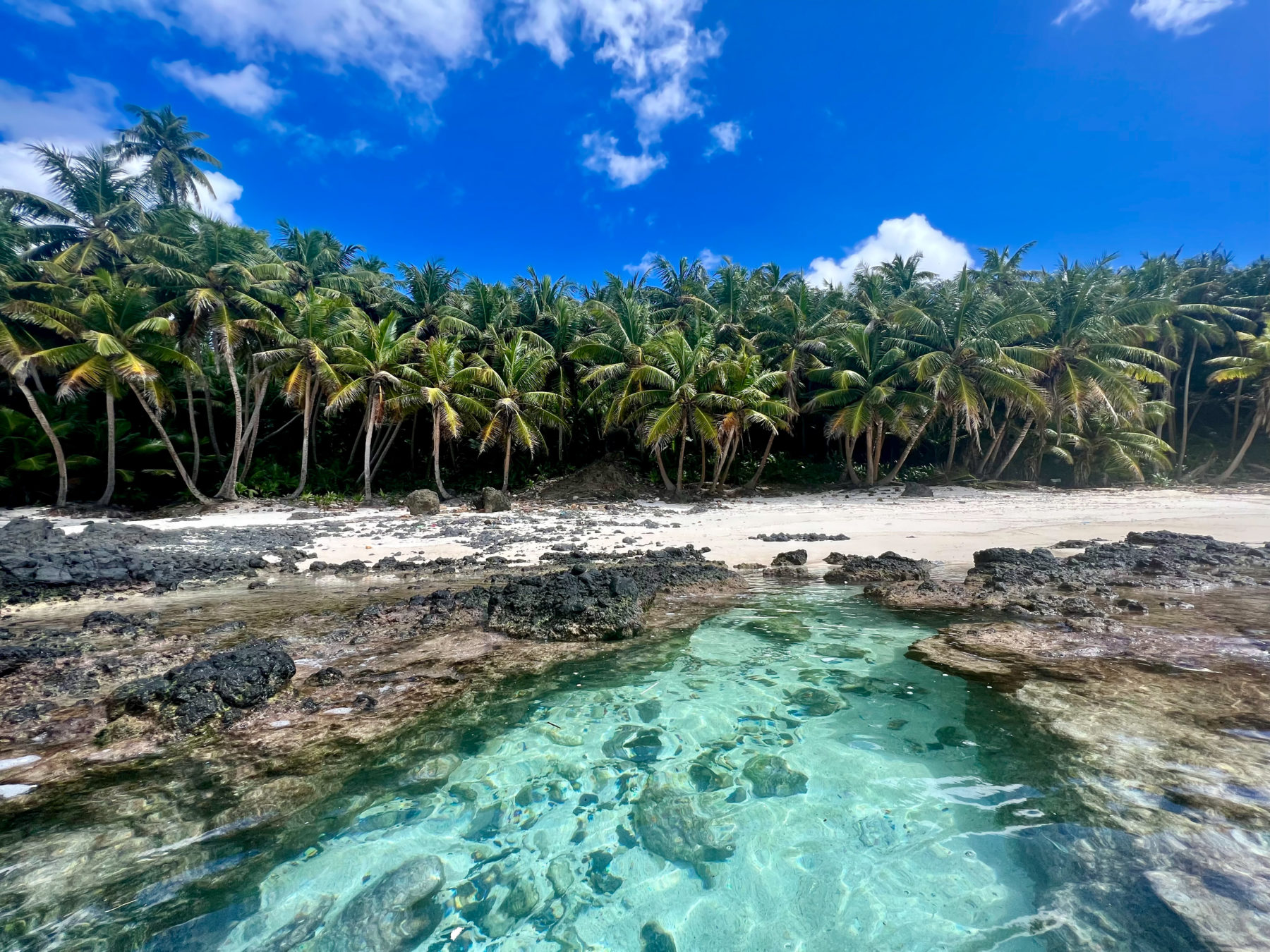
I’m drawn to the beach’s rockpools, where colourful fish swim beneath the ocean foam. Devastatingly, their flashing forms are overshadowed by floating straws and polystyrene. Next I spot a moray eel, lunging past a plastic water bottle to snatch some scuttling crabs. It’s confronting, to say the least, seeing these island residents trying to survive amid the debris.
Marine debris is one of the biggest environmental issues facing our planet, having devastating impacts on our ecosystems. We know that plastic lying on the beach heats the temperature of the sand, which impacts the crabs and turtles that live there. A baby turtle hatchling will change its sex according to the temperature of the sand.
A team of workers from the Tangaroa Blue Foundation (TBF), a not-for-profit Australian charity focused on the removal and prevention of marine debris, is on the beach at the time of my visit. TBF has been working in this space for more than 18 years and is instrumental in providing data on marine debris. It’s this evidence that’s needed to create changes at local, state, national and international levels through the Australian Marine Debris Initiative (AMDI) Database.
Laden with bags of collected rubbish, which is strung onto poles for the 2km trek to parked vehicles, WA project coordinator, Casey Woodward, and her crew, have collected some astounding data.
“In order to collect a meaningful dataset, our team set out a 16sq.m quadrant on both Dolly and nearby Greta beaches, to quantify and categorise items typically found on any given day,” Casey says.
“On Greta we counted 3811 items within that area, giving a debris density of 238 items per square metre. On Dolly, 1091 items were counted within 16sq.m, giving a debris density of 68 items per square metre. The debris included several hundred pieces of polystyrene, hard plastic remnants, single-use plastic straws, foreign plastic bottles and rubber remnants.
“It’s not unusual to collect a tonne of marine debris from Greta Beach in one day and together with the community we have achieved this on several of our visits. Unfortunately, during times in the year where the currents and winds are the strongest, the beach does not stay clean for long and will be covered in plastic, fishing gear and polystyrene at the next tide change.
“The Indian Ocean Territories [comprised of Christmas Island and the Cocos (Keeling) Islands and located 2600km from Perth] experience the highest marine debris densities in Western Australia and 99 per cent of the rubbish is from foreign sources. Waste management in developing countries is often non-existent with plastic and rubbish thrown into upstream waterways to be flushed into the ocean during monsoons. Strong ocean currents and winds allow these objects to travel great distances and be washed ashore on remote islands, like Christmas Island.
“To address the issue it’s imperative that marine debris is approached from a global perspective, with all countries and organisations working collaboratively to tackle plastic at every stage. This needs to start from design and production, through to recycling and end-of-life options based on true circular economy principles. We are hopeful that the United Nations Environment Programme’s (UNEP) Global Plastic Treaty, due to be introduced in 2024, will start to address these issues at the scale needed to have a real impact.”
At the entrance to Dolly Beach, the Shire of Christmas Island provides bags for visitors to take to the beach to help bring out a load of rubbish. I witness many people doing this – their small way to help while holidaying here.
An ‘Island Care’ sign tells me that plastics are now found inside animals throughout the ocean food chain from mussels, to fish, to sea turtles to whales. Plastics that have killed marine life can kill again when the animal decomposes and the plastic re-enters the environment. Research has found that 39 per cent of debris is polystyrene and fishing buoys, 31 per cent plastic food packaging, drink bottles and other plastics, and 26 per cent rubber thongs and remnants.
On Dolly Beach I collect well over 100 thongs within a few metres from where I’m standing.
Christmas Island is an internationally renowned seabird rookery with around 80,000 seabirds nesting on the island each year, including the world’s rarest booby, the Abbott’s booby, and the Christmas Island frigatebird. The island has been described as one of the wonders of the natural world. Devastatingly, however, I witness bird nests lined with plastic, robber crabs crawling over empty water bottles, and a hermit crab that has taken a plastic cap as a home instead of a natural seashell.
As the sun sets and a full moon rises, four turtles leave tracks in the sand as they make their way up the beach. They flick debris aside while digging a body pit and chamber in which to lay their eggs. On the water’s edge, the moonlight illuminates broken pieces of polystyrene washing in with each wave – countless glowing-white warning beacons. Somehow, we need to turn off this tide of plastic at the source. If we don’t, what future is there for all of us?

